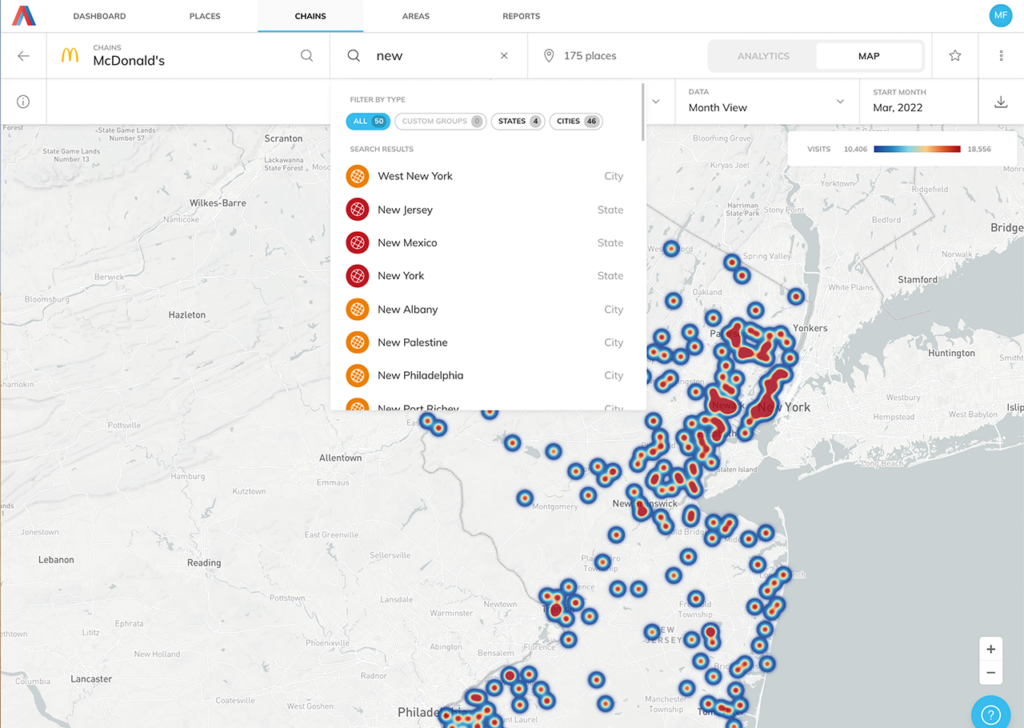Ready to take a peek at the best retail marketing strategies? Evaluate the examples, check out the data, and follow our steps to implement critical tools to improve performance across the board.
What is a retail marketing strategy?
A retail marketing strategy is a plan to promote a business, organisation, services, or products to encourage customers to make a purchase in-store or online. It can include many things to promote the product or brand, including:
-
Promotional materials and content
-
Social media platforms
-
Video content
-
Email marketing
-
Partnerships
-
Referrals
-
Influencers
What are the 4 P’s?
The 4 P’s refer to the four essential pillars of a marketing strategy: product, price, place, and promotion. While the 4 P’s are still relevant and important, they should only form the base of your plan. New tools, platforms, continual data analysis, and other techniques need to be in your strategy for your business to be competitive.
Best retail marketing strategies to try in 2023
What are the top-notch strategies that really hit the mark? Those that cleverly utilise the 4 P’s – Product, Price, Place, and Promotion – and take them a step further.
Dial your strategy up a notch by harnessing the power of advanced AI-driven data analysis, social platforms, and by giving your shop front an optimised facelift.
1. Open a popup shop
Ever thought about creating a sense of excitement and urgency among your customers? Popup shops might just be the answer. It’s an innovative retail marketing strategy that can be effective in generating buzz and driving sales. Check out this great example!
View this post on Instagram
Top tips!
Opening a temporary shop can increase your brand’s reach and visibility. Tighten up your strategy with these top tips:
-
Show your pop-up shop on event pages such as Facebook and Eventbrite
-
Ensure your shop appears on Google Maps
-
Follow up on comments and feedback
-
Choose a location with high foot traffic
2. Embrace Flexible Payment Options
ASA’s “Essentials Line” smashed into the market at just the right time in 2022, when consumer price inflation stood at 8.8%. The “Essentials” products quickly made their way into 33% of ASDA customers’ baskets.
A marketing strategy that takes into account the current climate and consumer priorities has a better chance of success.
Depending on your market and customer base, this may simply mean introducing flexible payment options such as “Buy Now, Pay Later” methods.
Staying on top of payment methods ensures that a good marketing strategy has good conversions. Without flexible payment methods, you will miss out on sales.
Thirty-one percent of consumers between the ages of 18 and 34 say that BNPL options at the store level make them more likely to shop. – NCR, 2023.
3. Use data from AI and machine learning

Marketers can greatly benefit from AI, which can summarize vast amounts of data and predict outcomes easily and quickly. One challenge retailers always face is the race for foot traffic.
55% of brands also say winning foot traffic will be a top challenge. Shopify, 2022.
To help overcome challenges and achieve targets, your strategy should include foot traffic analysis. To support your overall strategy, look for an AI-based service that includes:
-
Highly accurate historical data analysis
-
Predictions for trends and traffic data months in advance
-
Demographic breakdowns
4. Invest in short video content
In the fast-paced digital world, short video content has emerged as a vital marketing tool. Platforms like TikTok, YouTube Shorts, and Instagram Reels are gaining prominence in retail marketing, so why not ride the wave?
According to the State of Marketing 2023 report by Hubspot, short videos have the highest Return on Investment (ROI), making it a strategy worth considering. The beauty of short videos is their ability to convey a message or tell a story in an engaging and digestible way. This can significantly enhance your brand’s visibility and appeal to your target audience.
So, how do you go about it?
- Start by understanding your audience’s preferences
- Create content that resonates with them
- Consider hashtags and current trends
- Collaborate with influencers who align with your brand values to increase your reach
- Remember, authenticity is key in video content
5. Implement mobile marketing push notifications
Promoting exclusive, limited-time offers to your customers through push notifications in an effective marketing strategy for retail stores. Offers that are location-based can also encourage an increase in foot traffic to brick-and-mortar shops.
Push notifications can be done through an app or directly via text messages if you collect customer phone numbers. Similar to email offers, phone notifications reward customer loyalty and (even if the offer isn’t used) act as a reminder for brand awareness.
6. Optimize your shop display
Shop fronts and displays are a fantastic resource. While new marketing tools are the cherry on top of your strategy, a solid foundation is required to make the best of it all. Shop fronts are practically billboards at eye level and can advertise your products 24/7 when used right.
Having a beautiful layout and putting promotions at eye level are age-old retail techniques. If it isn’t broke, don’t fix it!
Don’t forget to share any shop updates on your social platforms. Any seasonal decor, new paint or event should be shared to keep your customers updated.
Optimised your shop’s look? Next, track your foot traffic and predict trends months in advance to stay on top of the competition.
7. Polish up your reputation
In this digital age, consumers frequently turn to online product reviews before purchasing – 95% in fact! So, it’s critical to encourage reviews.
First, claim your business profile and enter all your details if you haven’t already. From there, it’s a long but priceless process to build up your reputation. Here’s a quick breakdown of how to get more reviews.
- Send a confirmation email after a customer makes a purchase at your shop or online, followed by a thank you email when the product has arrived which has a link to give a review.
- Offer a voucher code for giving a review.
- Train your employees to tell customers in-store about opportunities to leave a review online.
- Reply to reviews – positive and negative – openly to promote transparency and show your customers you appreciate their comments.
- Quote and show reviews from online platforms such as Facebook and Trustpilot directly on your website for social proof.
- Use a chatbot on your site or Facebook messenger. This can automate the process and get reviews from customers whose problems have been solved.
8. Start experimenting with experiences
Going to a physical retail shop can be something special. While omnichannel marketing has been a buzzword in the space for some time, the end of lockdown has led to interesting experiments by many retailers to draw in customers.
Online shopping is about the convenience, while in-store is all about the experience!
Welcome to the world of retailtainment. The experiences should be interactive, original, and memorable. That’s a tough ask, but if you know your brand and customers then some ideas can begin to emerge.
- Ikea invited 7 competition winners for a sleepover event, generating free publicity, a global Facebook campaign, and the pioneering of successful retail experiences brands can dream of recreating.
- Jo Malone, the worldwide fragrance retailer, offers a 20-minute complimentary hand and arm massage as well as a 10-minute scent exploration with a stylist.
9. Consider co-brand partnerships
Co-brand promotions are more and more common. Subscription boxes often include discounts for other non-competition retailers in a mutually beneficial relationship. Entering into a co-brand partnership can benefit you by:
- Increasing market share
- Growing awareness
- Grow an additional form of revenue
Partnerships can be short-term or long-term but are always strategic.
One example that has (so far) stood the test of time is Apple and Mastercard. The co-brand relationship dominates the world of contactless payment methods with over 900 million active Apple phones worldwide. Apple Pay allows users to make contactless payments from their devices, increasing convenience for Mastercard users with an inbuilt system.
Many customers are also now familiar with receiving discount offers from retail partners, such as receiving paper voucher codes in a monthly subscription box such as SimplyCook, Abel & Co, and Look Fantastic.
10. Work with influencers
Influencer strategy is a world of its own. Keep an eye on trends and watch to see who’s tagging you in posts. Customers may tag you in photos along with influencer partnerships and other businesses. All of these posts can be shared and are part of building out your strategy to make a loyal community, just as you can see here:
View this post on Instagram
Social media discourse changes quickly, but some trends for brands and influencers to watch this year are:
- Fewer filters, more authentic. The age of the “perfect” and polished IG life is over.
- User Generated Content (USG). Repost customer photos and videos, and reply to comments. This is more difficult for newer brands but can build up over time.
- Long-term relationships. While a one-off video is still beneficial, a longer video series and long-term partnership can work like a co-brand relationship to build a community and authenticity.
11. Referrals
Word-of-mouth is an age-old tactic and, to this day, is one of the most powerful tools in your arsenal. Acquire a customer through word-of-mouth and they could spend twice as much and make twice as many referrals.
Some referrals do happen organically, but for most, you’ll need to ask. After a customer has had a positive experience (such as leaving a review) get in touch and ask if they would be interested in giving a referral and the benefits of doing so.
Referrals can have a massive effect on your customer base growth. Morning Brew can credit over 30% of their over 2.5 million subscribers to their referral program.
Next steps
Retail businesses need marketing like a fish needs water. The best approach for your business will depend on the products, target market, and budget.
To better understand your customers and the opportunities at your fingertips, you’ll need to access highly accurate data to plan your strategy and track performance – especially for tricky omnichannel campaigns.
See our geospatial retail solutions to boost your marketing with accurate data.






